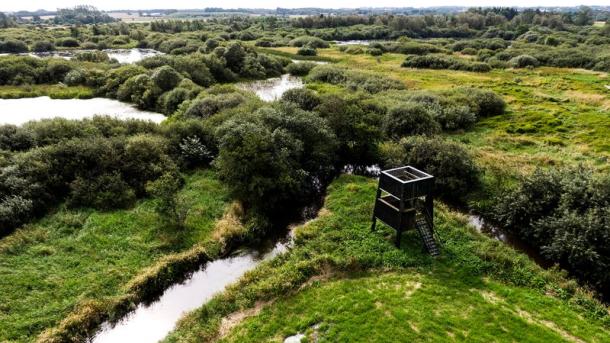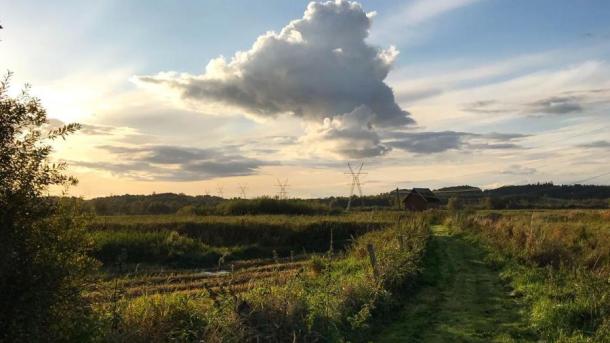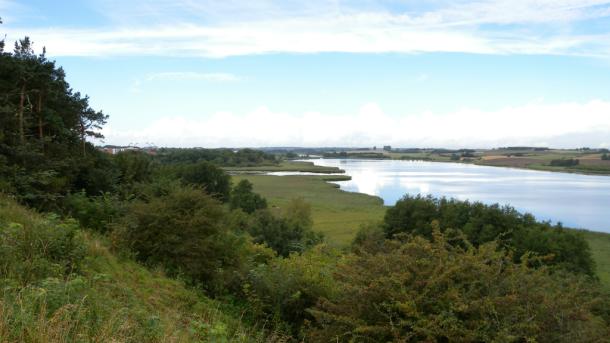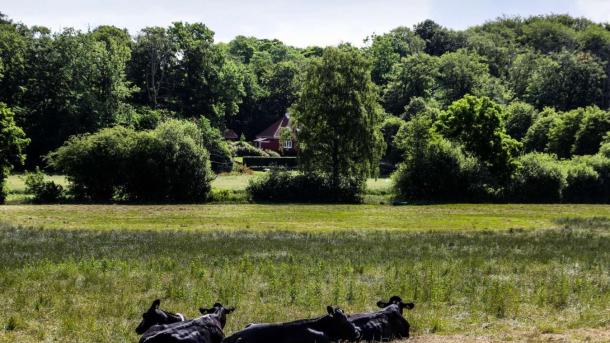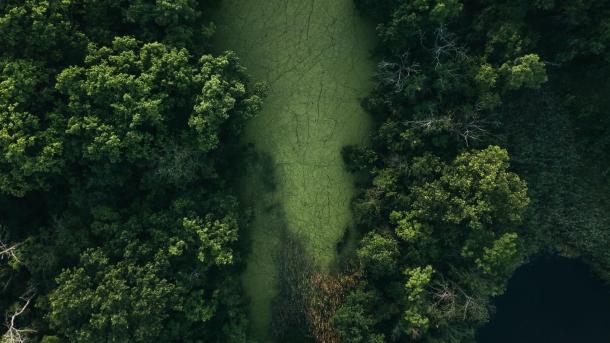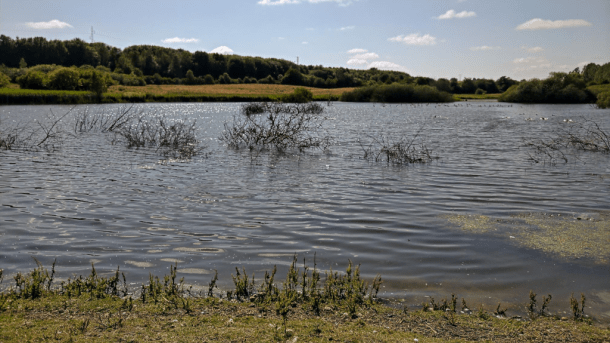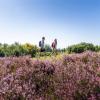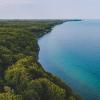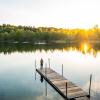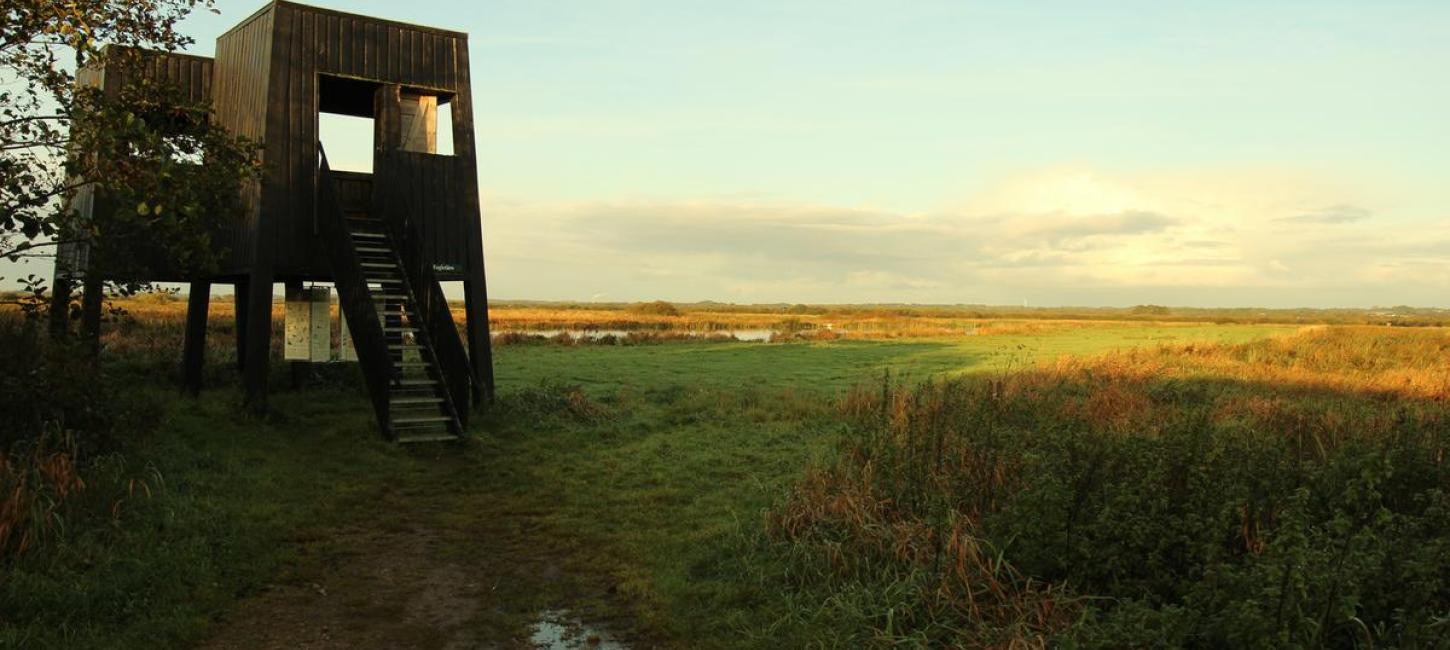
Hiking in the meadows and marshlands of Kystlandet
Open expanses, unique nature and a rich wildlife await in Kystlandet’s meadows, bogs and marshlands. Put on your hiking boots and explore the East Jutland wetlands, which offer very special nature experiences.
Wetlands can be perfect hiking ground
A large number of streams, lakes and valleys mean that there are many wetlands in Kystlandet with a unique natural form. Birds and insects thrive in wetlands, meadows and marshlands but it is not only the animals that seek the open, wet areas of Kystlandet. In many places, the wetlands have been made accessible to people on foot as recreational areas with raised paths, bridges, bird towers and other facilities, which help to create great nature experiences for you as a guest. We guide you to walks in the wetlands of Kystlandet - from Denmark’s largest to the slightly smaller marshlands and meadows, which are unknown but hiking territory that is well worth seeing for most people.
Our best suggestions
Uldum Marsh (Round trip - 5 km)
Uldum Marsh is nothing less than Denmark’s largest marsh area. It stretches over 1200 hectares, located by the river Gudenåen between Tørring, Uldum and Aale. The area is developed with many paths and roads that make it possible to get around. We recommend a round trip from the shelter site near Uldum to the End of the World and back again. There are three bird towers on the trip and optimal conditions to observe the unique nature and wildlife. There is parking in the car par by the bird tower and shelter on Kærvejen.
The Four Meadows (Round trip - 7-9 km)
On the northwestern outskirts of Horsens is a large meadow area around Store Hansted river. Egebjerg, Hansted, Horsens and Bygholm meadows have in recent years been developed with path systems, bird towers, bridges and raised paths over wetlands. You can park by the lay by area at Skanderborg and go for a round trip of approx. 7 kilometres, where the trip goes back on the Horsens-Silkeborg Nature Trail through the area of Horsens Golf Club. You can also park at Scandic Opus Horsens on Egebjergvej and extend the trip along the river through Horsens Meadow and Løvhøj Forest.
Nørrestrand (Round trip - approx. 9 km)
In the immediate extension of the four meadows to the east, the Nørrestrand wildlife reserve is located on the northern outskirts of Horsens town. Nørrestrand is a larger freshwater lake and river delta with fine path connections. On the south side of the lake is a lower and an upper path. We recommend a tour on the south side of the lake based on the two trails. On the lower path is a larger bird tower with an excellent view of the area. Parking at the car park at the start of Nordre Strandvej at the western end of Nørrestrand.
Ørting and Randlev Marsh (5.5 km)
Extremely idyllic marshland area characterised by agriculture and charming houses. West of Ørting you can start the trip along Mosevej, where it meets the road Halen. From here you can follow the signs for the Horsens-Odder Railway Trail all the way. When you cross Oddervej you come to Randlev Marsh, which is protected and has a unique nature with a rich bird and insect life. Parking at Ørting Church.
Pinddal Marsh (4.3 km)
Pinddalen valley is located between Voervadsbro and The Monastery Mill (Klostermølle) in the southern part of Søhøjlandet in Højlund Forest. It is quite peaceful in the characteristic forest landscape with several lakes and bog holes with high slopes, hills and lots of ferns. A yellow, signposted route leads around the forest, which is an extension of the Gudenå Trail. You can combine the trip with the nearby The Monastery Mill (Klostermølle), The Sugar Loaf (Sukkertoppen) and Kloster Marsh. Parking in the car park at the corner of Klostermøllevej and Grønskovvej.
Kloster Marsh (Round trip 3.5 km)
West of Mos Lake is the large marshland area of Kloster Marsh. A major watercourse project has recently been carried out here, where most of the Gudenåen’s water is now led through the river delta, with major changes and improvements for nature in the area as a result. From The Monastery Mill (Klostermølle) there is a path on the north side of the canal, Klosterkanalen, where the water used to pass through. Via the path and grass along the new course, you can get to Højlundvej and walk briefly south to the enclosure that leads up to the top of The Sugar Loaf (Sukkertoppen). Parking in the car park at The Monastery Mill (Klostermølle) on Klostermøllevej.
Torsted Meadow (Round trip 1 km)
In southwestern Horsens, this new recreational area is located in a larger enclosure with grazing cattle. Around Torsted Meadow Lake is a signposted footpath. The trip can be combined with a walk in Børne Forest in Torsted. Parking at the corner of Sandøvej and Vågøvej. You can also arrive on foot from Sverigevej (opposite the allotment gardens).
In wetlands it can sometimes be .... well, wet
In wetlands, the water level can vary with a wide variety of landscapes as a result. And in marshes - especially through forests - the paths can sometimes be slippery. Think about this in relation to the choice of footwear and clothing. The nature areas are made accessible so that you do not have to have wet toes, so do not let yourself be deterred. As long as you stick to the paths, you can leave your Wellington boots at home.
